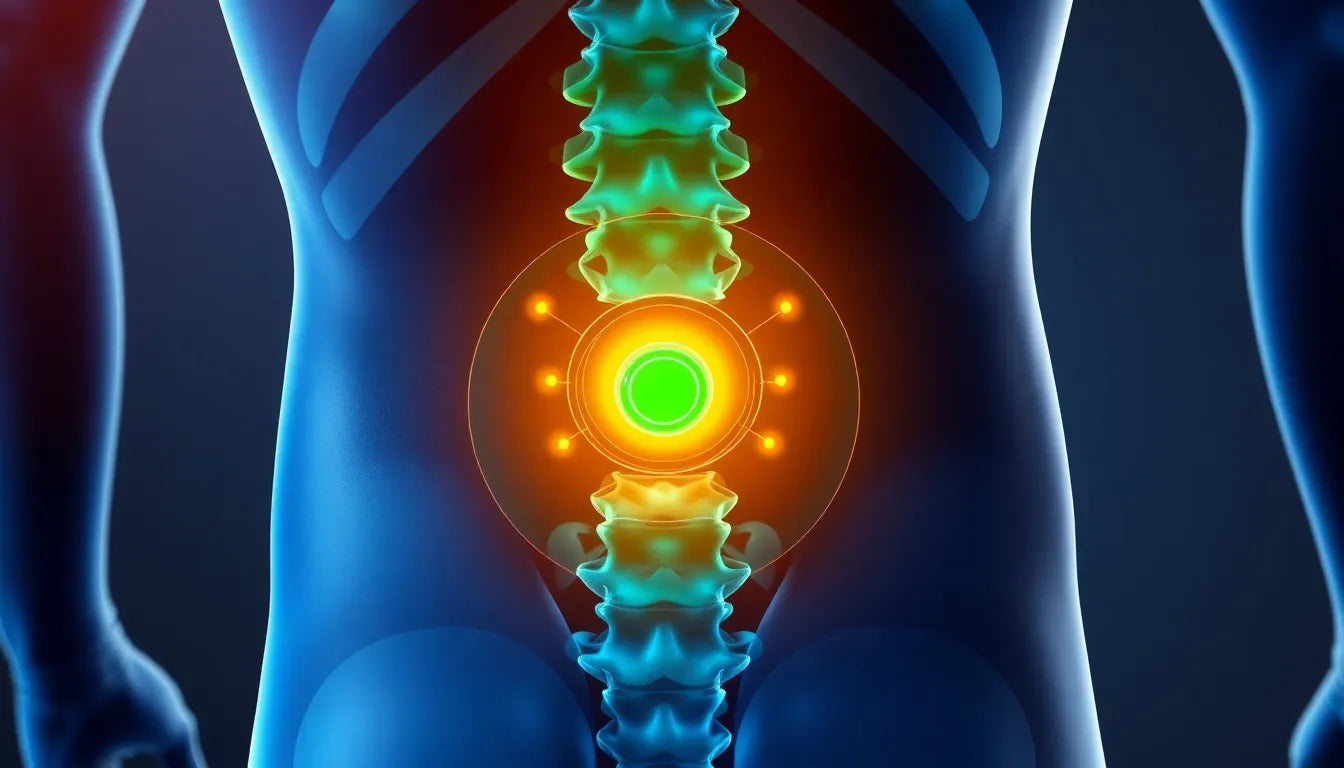In today's fast-paced world, maintaining spinal health is more crucial than ever. With back pain being a common ailment that affects millions globally, understanding the intricacies of spinal conditions can be vital for effective management and treatment. Among the myriad of spinal issues, disc protrusion and herniated disc are terms frequently mentioned. While they are often used interchangeably, they represent distinct conditions, each with unique implications for recovery and care.
Understanding disc protrusion and herniated disc
Disc protrusion, commonly referred to as a bulging disc, occurs when the intervertebral disc is pushed out of its usual position. The disc remains intact, but both the annulus and nucleus shift into the nerve canal, potentially causing discomfort. On the other hand, a herniated disc is a more severe condition where the nucleus breaks through the annulus, leading to the disc material protruding into the nerve canal. This breach can result in more pronounced symptoms and may require different treatment approaches.
Recognizing the differences between these two conditions is essential not only for accurate diagnosis but also for determining the most appropriate treatment plan. Misunderstanding these terms can lead to confusion and potentially inadequate care, which is why it is crucial to clarify what each condition entails.
The purpose of this blog post
This blog post aims to demystify the differences between disc protrusion and herniated discs. By providing a clear and comprehensive explanation of each condition, we hope to equip readers with the knowledge necessary to understand their symptoms and seek appropriate medical advice. Whether you're experiencing back pain or simply wish to expand your knowledge about spinal health, understanding these conditions can empower you to make informed decisions about your health and well-being.
As we delve deeper into the anatomy of the spine and explore the specifics of disc protrusion and herniated discs, it becomes evident that knowledge is power. By the end of this post, you'll have a clearer picture of these conditions and be better prepared to address any related issues you or your loved ones might face.
Anatomy of the spine and the role of intervertebral discs
The spine, a complex structure composed of bones, muscles, nerves, and discs, serves as the main support for the body, allowing for movement and flexibility while protecting the spinal cord. At the core of this structure are the intervertebral discs, which act as shock absorbers between each vertebra. These discs are composed of a tough outer layer called the annulus fibrosus and a gel-like center known as the nucleus pulposus. Together, they provide cushioning and flexibility, enabling the spine to withstand various stresses and strains encountered during daily activities.
Disc protrusion: symptoms, causes, and visual comparison
Disc protrusion, often termed a bulging disc, occurs when the disc extends beyond its normal boundary without rupturing. This condition can lead to localized pain, tingling, or numbness, depending on the severity and location of the protrusion. Commonly, individuals may experience discomfort in the lower back or neck, areas where protrusion frequently occurs due to the high mobility and stress these regions endure.
The causes of disc protrusion are varied, with age-related degeneration being a primary factor. As we age, discs naturally lose water content, becoming less flexible and more prone to bulging. Poor posture, repetitive movements, and sudden injuries can also contribute to the development of this condition. Understanding these causes is crucial for both prevention and management of symptoms.
To better understand the differences between disc protrusion and herniation, consider a visual comparison that highlights key characteristics. In a protrusion, the disc maintains its overall structure, with the annulus and nucleus remaining contained, albeit displaced. This contrasts with herniation, where the nucleus breaches the annulus, leading to more severe implications.
Disc herniation: understanding the severity and symptoms
Disc herniation, a more severe condition than protrusion, occurs when the nucleus pulposus breaks through the annulus fibrosus. This breach allows disc material to protrude into the nerve canal, potentially compressing nearby nerves and causing significant pain. Symptoms of a herniated disc often include radiating pain, muscle weakness, and in some cases, loss of reflexes. These symptoms are typically more pronounced than those of a protrusion, given the greater degree of nerve involvement.
Herniation can be further categorized into protrusions and extrusions. Protrusions involve the nucleus pushing against the annulus without complete rupture, while extrusions represent a complete breach with disc material escaping into the surrounding areas. This distinction is important as extrusions often require more intensive treatment and management strategies.
The causes of disc herniation are similar to those of protrusion, including heavy lifting, sudden trauma, and genetic predisposition. However, the increased severity of herniation underscores the importance of early diagnosis and intervention to prevent further complications.
By understanding the anatomy of the spine and the specific characteristics of disc protrusion and herniation, individuals can better appreciate the importance of maintaining spinal health. This knowledge not only aids in recognizing symptoms but also empowers individuals to seek appropriate treatment and make informed decisions regarding their health.
Treatment options for spinal disc issues
When dealing with disc protrusion and herniated discs, understanding the available treatment options is crucial for effective management and recovery. For disc protrusion, conservative approaches are often effective. These may include physical therapy to improve strength and flexibility, medications such as non-steroidal anti-inflammatory drugs (NSAIDs) to reduce pain and inflammation, and lifestyle modifications like ergonomic adjustments and weight management. Surgery is generally considered only when these measures fail to provide relief or if neurological symptoms worsen.
In contrast, treatment for a herniated disc may require more intensive interventions, especially if the condition is severe. Initial approaches often involve rest, physical therapy, and pain management strategies similar to those used for disc protrusion. However, if symptoms persist or worsen, surgical options such as discectomy or laminectomy may be necessary to relieve nerve compression and restore function.
Preventing disc problems
Prevention is key to maintaining spinal health and avoiding disc issues. Adopting ergonomic practices, such as maintaining proper posture while sitting and standing, can significantly reduce stress on the spine. Regular exercise, particularly activities that strengthen core muscles, helps support the spine and prevent disc degeneration. Additionally, practicing safe lifting techniques—by bending at the knees and keeping the load close to the body—can prevent sudden injuries that may lead to disc protrusion or herniation.
Frequently Asked Questions
What is the difference between a bulging disc and a herniated disc?
A bulging disc, or disc protrusion, occurs when the disc extends out of its normal boundary without rupturing, while a herniated disc involves the nucleus breaking through the annulus, often causing more severe symptoms due to nerve compression.
Is a disc protrusion the same as a herniated disc?
No, a disc protrusion and a herniated disc are not the same. A disc protrusion maintains the disc's structural integrity, whereas a herniated disc involves a rupture in the annulus, allowing the nucleus to escape, often leading to more intense symptoms.
Can a disc protrusion lead to a herniated disc?
Yes, a disc protrusion can progress to a herniated disc if the stress on the disc continues or increases, potentially causing the annulus to rupture. Factors such as continued poor posture, heavy lifting, or trauma can contribute to this progression.
What are the long-term effects of untreated disc issues?
Untreated disc issues can lead to chronic pain, reduced mobility, and in severe cases, permanent nerve damage. It is essential to seek medical advice to prevent these complications and explore appropriate treatment options.
How can I tell if my back pain is due to a disc issue?
Back pain from a disc issue often includes symptoms like localized pain, tingling, or numbness, particularly if the pain radiates down the legs or arms. If you experience these symptoms, it is advisable to consult a healthcare professional for a proper diagnosis.


















